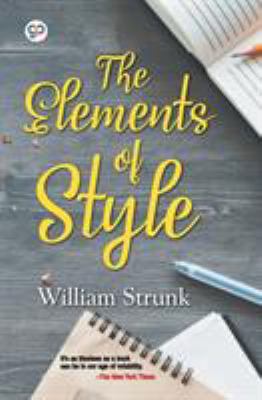
館長分享
Reading, writing, speaking, and listening are four pillars in language learning. If you want to polish your English writing skills in an interesting way, “The Elements of Style” should be the one on your bookshelf.
Let me tell you a bit of the history of “The Elements of Style”. Once known as “the Little Book” privately written and printed by Professor William Strunk Jr. in 1919, the book was expanded by Mr. Elwyn Brooks White (E.B. White), Professor William Strunk’s student, in 1957. The first expanded edition co-authored by Strunk and White was published in 1959. Yes, a bit of calculation tells you that the book is over 60 years old. But the book has certainly aged well and is still an indispensable quick reference tool for many. In fact, it has been selected as all-time 100 best non-fiction book by the Time Magazine and the Guardian.
“The Elements of Style” consists of various parts. In each part the writers suggest different tips. For instance, in the part of “Elementary Rules of Usage”, Strunk and White introduce fundamental grammatical rules from “Subject-verb Agreement” to the easily neglected “Apostrophe Rules”. There are also tips on some commonly misused expression, composition in writing, and writing style. While some people may think that English writing rules composed a century ago are full of clichés and redundant, read the book first! Flipping through the pages, and you will find that the Little Book is in fact a timeless iconic fashion. For example, writers can make sentences more concise and clear by simply using “the active voice” and expressing “a negative (idea) in positive form”. “Omit needless words” is the forever golden rule for writing in clarity.
Strunk and White understand that sometimes writers may want to present an idea in a fascinating way rather than in plain style. They also acknowledge that grammar is ever changing. In the part “Approach to Style”, not only do Strunk and White add a list of reminders drawn from the writers’ experience, but they also compare and explain the differences between some modern writing style and classic writing style. The authors also analyse the language in different fields, such as advertising and law, which allow readers to explore writings in different context. For readers who may get confused with specific terms like “restrictive term” and ‘syntax” while reading, the book’s “Glossary” at the back gives a quick help.
Finally, if you are struggling about which edition you should borrow, here are the suggestions.
If you want to read as much as possible from Strunk and White, the Penguin Press version is perfect for you. Apart from the updated content based on the fourth edition, the book also contains “Spelling” from the first edition, “Introduction to the 3rd edition” by E.B. White, as well as the “Introduction to the first edition” by William Strunk;
If you want to read “the Little Book” solely written by William Strunk, you may want to go for the first edition;
Or if you want to have a taste of electronic reading, do try the Hong Kong Public Libraries’ e-Book Collections on EBSCOhost or OverDrive and a Chinese translated version on Apabi (Adults Collection) via HKPL website.

